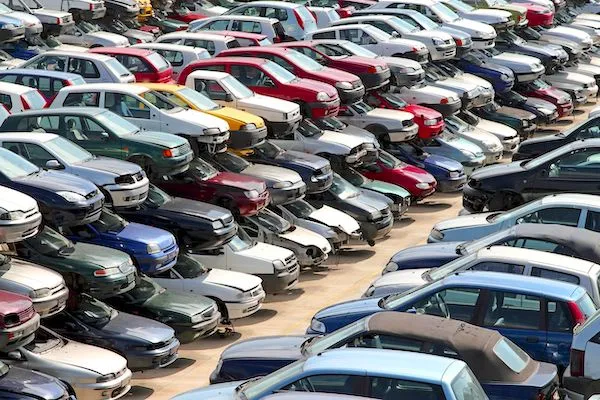Unlocking the Hidden Worth: What Determines the Scrap Value of Your Car?

In Singapore’s tightly regulated automotive market, understanding the scrap value of your car is not just a matter of financial prudence—it is an exercise in navigating the intricate dance between policy, sustainability, and market dynamics. At the heart of this calculation lies a fascinating interplay of economics and environmental responsibility that affects every vehicle owner in the Lion City.
What Is the Scrap Value of a Car?
Scrap value is not merely what remains when a car ceases to function; it is a reflection of multiple variables, from the vehicle’s condition and materials to prevailing policies and market demand. In Singapore, this process is uniquely influenced by the Certificate of Entitlement (COE) system, which determines a vehicle’s lifespan and residual value.
The Land Transport Authority (LTA) incentivises scrapping vehicles before their COE expires through the Preferential Additional Registration Fee (PARF) rebate. This rebate, combined with the value of the car’s metal and usable parts, forms the essence of the scrap value.
Factors That Determine Scrap Value
Several factors contribute to the scrap value of a car, each interconnected with broader economic and environmental trends:
1. COE and PARF Rebates
- Cars deregistered before their 10-year COE expires are eligible for a PARF rebate, calculated as a percentage of the vehicle’s Additional Registration Fee (ARF).
- For instance, a car deregistered in its ninth year could receive up to 50% of its ARF back.
2. Market Demand for Parts
- Vehicles with popular or scarce parts fetch higher scrap values as workshops and resellers seek components for resale or repair.
- Luxury brands like BMW or Mercedes-Benz typically hold greater part demand than mass-market models.
3. Metal Content and Weight
- The value of scrap metal fluctuates based on global markets. Heavier vehicles, like SUVs, may yield more scrap value due to their greater metal content.
4. Condition and Age of the Car
- Well-maintained cars with salvageable parts (e.g., engines, transmissions) can command a higher price.
- Older vehicles with significant wear often hold little value beyond their base metal worth.
5. Environmental Regulations
- Singapore’s strict emissions policies drive demand for eco-friendly recycling processes, influencing how scrapyards assess value.

Singapore Statistics: The Numbers Behind the Scene
Singapore’s unique automotive landscape provides context to the significance of car scrapping:
- 12% of deregistered cars in Singapore were scrapped or exported in 2022.
- The average age of deregistered vehicles stands at 8.5 years, reflecting a trend of owners capitalising on COE rebates rather than extending usage.
- Recycling rates for vehicles in Singapore exceed 85%, underscoring the industry’s role in sustainability.
Maximising the Scrap Value of Your Car
To ensure you get the best possible return when scrapping your car, consider the following strategies:
Deregister Strategically
- Timing is crucial. Cars deregistered just before the COE expiry yield higher PARF rebates.
- Use the LTA’s digital services to calculate your exact rebate amount.
Choose a Licensed Scrapyard
- Select scrapyards accredited by the LTA to ensure transparent processes and accurate valuations.
Sell Directly for Parts
- Explore selling high-demand components (e.g., tyres, batteries) to workshops or resellers before scrapping.
Maintain Regular Servicing
- Vehicles in good working order typically fetch better scrap offers as their parts hold more resale potential.
Consider Export Value
- Some cars are more valuable in overseas markets, particularly if they are no longer compliant with Singapore’s emissions standards but remain roadworthy elsewhere.
The Role of Sustainability in Car Scrapping
Scrapping a car is not merely a financial transaction; it is an act deeply tied to sustainability. Singapore’s focus on recycling and reducing waste means that a significant portion of a scrapped vehicle is repurposed:
- Metals are melted down and reused in construction or manufacturing.
- Plastics and other materials are often recycled into new automotive parts.
- Hazardous components like batteries are carefully disposed of to prevent environmental harm.
Singapore’s circular economy approach to car scrapping ensures that deregistered vehicles contribute to the broader effort of reducing carbon footprints and preserving natural resources.
Common Myths About Scrap Value
- “Older cars have no value.” While age impacts scrap value, vehicles with intact, reusable parts can still fetch competitive prices.
- “Scrapping is the only option.” Exporting or reselling your car may be more lucrative in certain cases, particularly for vehicles with niche demand overseas.
- “Scrapyards are all the same.” Not all scrapyards operate with equal transparency—research is key to avoiding undervaluation.
Future Trends in Car Scrapping
As technology advances and environmental consciousness grows, the car scrapping process is likely to evolve:
- Digital Platforms: Apps and online services are streamlining scrap valuation, allowing owners to get instant quotes and compare offers.
- Eco-Friendly Processes: Emerging methods focus on reducing waste during the scrapping process, with greater emphasis on recycling non-metal components.
- Government Incentives: Future policies may offer higher rebates or grants to encourage eco-conscious scrapping practices.
Final Thoughts
Understanding the scrap value of your car is about more than monetary gain—it reflects a larger narrative of responsibility, efficiency, and sustainability. In Singapore, where automotive ownership is deeply intertwined with policy and environmental stewardship, making informed decisions about scrapping ensures you extract maximum value while contributing to a greener future.
When the time comes to bid farewell to your vehicle, remember: the scrap value of your car is a reflection of both its material worth and its potential to contribute to a more sustainable world.



